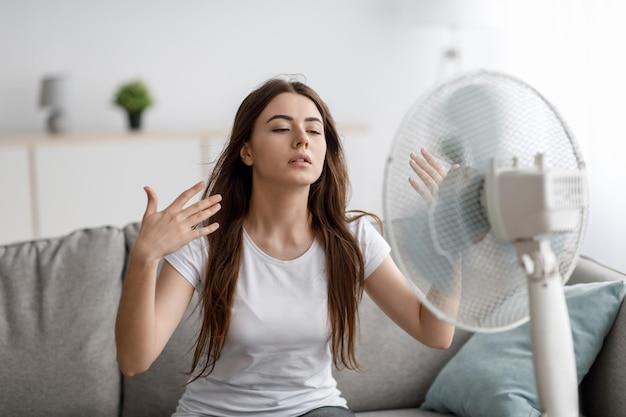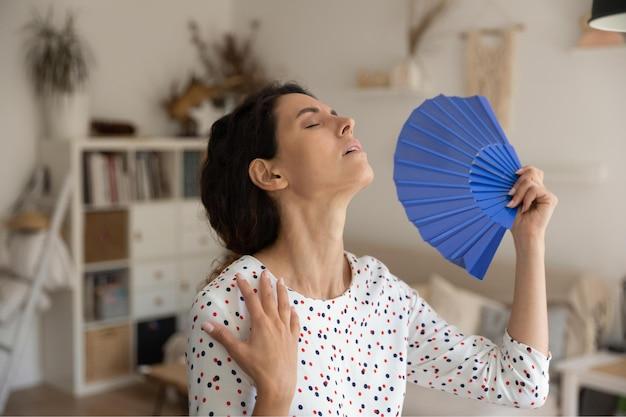Welcome to our comprehensive blog post on the topic of indoor temperature! We’ve all experienced the discomfort of a sweltering hot or freezing cold home, but finding the perfect balance can be quite a challenge. With the year 2023 bringing new advancements and ever-changing climate conditions, it’s essential to stay informed on what is considered a comfortable indoor temperature. In this post, we’ll explore the common question of what temperature is too hot for your house, as well as dive into the best temperature for a restful sleep. So, whether you’re trying to beat the summer heat or stay cozy during the winter months, we’re here to help you find the optimal temperature for your home. Let’s get started!
What Indoor Temperature is Too Hot
The Consequences of Cranking up the Heat
We all love a cozy, warm home during the colder months. But have you ever wondered if there’s such a thing as “too hot” when it comes to indoor temperatures? Turns out, there is! Pushing the thermostat to the extreme can have some unexpected consequences, both for your comfort and your well-being.
The Science Behind the Sweat
Our bodies have an amazing ability to regulate temperature, but there is a limit to how much heat they can handle. When the temperature rises too high, our internal cooling systems kick into overdrive, leading to excessive sweating. Not only does this make you incredibly uncomfortable, but it can also quickly lead to dehydration.
The Risks of Roasting
Besides the discomfort and potential dehydration, cranking up the heat can have other negative effects on your health. If the air in your home is consistently too hot, it can increase the risk of respiratory problems, especially for individuals with asthma or other respiratory conditions. Additionally, overheating can put a strain on your cardiovascular system, potentially leading to an increased heart rate and blood pressure.
How Hot is Too Hot
The ideal indoor temperature for most people falls between 68-72°F (20-22°C). However, what feels cozy for one person may be a sweaty nightmare for another. Factors like age, health, and personal preference can all influence our individual comfort levels. As a general rule, though, it’s a good idea to keep your indoor temperature within a range that maintains comfort without causing excessive perspiration.
Signs You’re Sizzling
So, how can you tell if your home is hotter than it should be? Look out for telltale signs such as constant sweating, difficulty breathing, dizziness, and fatigue. If you notice any of these symptoms, it’s a clear indication that your indoor temperature may be too hot for your own good.
Tips for Temperature Taming
To keep your home comfortable and avoid turning it into a sauna, try these simple solutions:
Embrace Natural Ventilation
Open windows and doors to let in fresh air and create a cooling breeze. Utilizing fans can also help circulate the air and maintain a comfortable temperature.
Seek Shade
If the sun’s rays are turning your home into an oven, draw the curtains or blinds to block out the heat. You can also invest in reflective window film to reduce the amount of solar heat entering your space.
Dress for the Weather
Swap your woolly sweaters and thick blankets for lighter, breathable fabrics. Opt for natural materials like cotton, linen, or bamboo to stay cool and comfortable.
Wrap-Up
While a toasty indoor environment might seem appealing, it’s essential to find a temperature that strikes a balance between comfort and health. By keeping your home within the optimal temperature range, you can stay cozy without sweating up a storm. So, bid farewell to extreme heat, and embrace a climate that keeps you feeling just right.
FAQ: What Indoor Temperature Is Too Hot
Is 75 degrees too hot for my house
If your house feels like a sauna at 75 degrees, it might be a tad too hot for comfort. However, this is subjective and depends on personal preferences and the outside temperature. Some people might find 75 degrees to be just right, while others might break a sweat. To maintain a balmy atmosphere, you can try adjusting the temperature a few degrees lower and see what works best for you.
Is 80 degrees too hot in a house
At 80 degrees, your house might start feeling like a tropical paradise, but it could also turn into a hot, sticky mess depending on your tolerance for warmth. While this temperature is perfect for a lazy day at the beach, you might want to turn down the heat a bit to keep your home comfortably cool. Make sure to keep a balance between your desire for warmth and the comfort of others in your household.
Is 80 degrees too hot to sleep
Ah, the age-old question – is it too hot to sleep? Well, sleeping in an 80-degree room might make you feel like a roasted marshmallow on a summer campfire. Your body temperature naturally drops during sleep, so overheating could disrupt your slumber and leave you tossing and turning. It’s generally recommended to keep your bedroom between 60 and 67 degrees Fahrenheit for optimal sleep. So, grab your trusty fan or adjust that thermostat to enjoy a cool and refreshing night’s sleep.
Is 72 degrees too hot for my house
Believe it or not, 72 degrees is a sweet spot for many. It falls within the realm of a comfortable indoor temperature and can help strike a balance between energy efficiency and personal preference. However, if you find yourself perpetually reaching for a cold beverage or feeling a little too toasty, consider lowering the temperature a smidge to achieve a more refreshing atmosphere.
What is the ideal temperature for a good night’s sleep
Ah, the elusive realm of dreamland! The ideal temperature for a restful sleep is generally considered to be between 60 and 67 degrees Fahrenheit. This range allows your body to cool down, your muscles to relax, and your mind to drift off into peaceful slumber. So, dare to keep it cool and cozy, and prepare yourself for a rejuvenating sleep experience.
Is 90 degrees too hot for my house
Ninety degrees in your house? That sounds like a mini heatwave! Anything above 85 degrees can be incredibly uncomfortable and bordering on sauna-like conditions. Not only will you feel the heat creeping under your skin, but your furniture, pets, and even houseplants will probably start complaining, too. So, be a hero and turn down the heat if you find yourself in this sweltering situation.
Is 68 degrees too cold for my house
Let’s call 68 degrees a happy medium – not too cold, but slightly cooler than average room temperature. While it might feel chilly at first, it’s actually a great temperature for energy efficiency and can lead to some savings on your heating bill. Just snuggle up in some cozy blankets, get your hands on a warm beverage, and enjoy the crisp air in your comfortably cool abode.
Is 74 degrees too hot for my house in winter
In the depths of winter, 74 degrees can be quite toasty, especially with the help of a well-functioning heating system. While it might feel like a warm hug from your beloved radiator, you may want to consider lowering the temperature a few degrees to save on energy costs. Plus, it’s always good to embrace the sweater weather and keep those winter vibes alive.
Is 79 degrees too hot for my house
At 79 degrees, you’re entering the territory of a balmy summer day. While some may enjoy this warm environment, others might start feeling as if they wandered into a desert oasis without a proper escape plan. If you find yourself melting like an ice cream cone, consider cooling things down a notch to find that sweet spot of comfort in your home.
Is 90 degrees too hot to sleep
Ninety degrees is definitely pushing the boundaries of comfort when it comes to sleeping. Your pillow might feel like a soggy marshmallow, and your sheets might turn into a personal sauna experience. It’s ideal to keep the temperature between 60 and 67 degrees Fahrenheit while catching those Z’s. So, if your room resembles a tropical paradise, it might be time to adjust that thermostat for some sleep-inducing coolness.
Is 75 degrees too high for heating
While 75 degrees might feel cozy and warm to some, others might find themselves feeling as if they’re living in a furnace. It’s all about personal preference and comfort levels. If you’re feeling a bit like a sweat lodge resident, try adjusting the heat down a few degrees to find the perfect balance between warmth and just the right amount of toasty.
Is 78 degrees too hot for my house
Seventy-eight degrees might tempt you to crank up the air conditioning and pretend you’re on a tropical vacation. However, be cautious! This temperature might be a little too hot for comfort, especially if you start feeling like a melting popsicle. Consider adjusting the thermostat down a few degrees to keep yourself and your home in a happy, cool equilibrium.
Is 78 degrees too hot to sleep
Sleeping at 78 degrees may have you waking up like a wilted flower craving some cool, refreshing air. Experts recommend keeping your bedroom temperature between 60 and 67 degrees Fahrenheit for optimal sleep. So, grab a fan, open a window, or adjust that thermostat to steer clear of hot, sleepless nights and embrace those dreamy adventures.
Is 72 degrees a good temperature for winter heating
Ah, winter, the season of warm socks and mugs of hot cocoa. With the colder weather outside, setting your thermostat to 72 degrees can provide a comfortable indoor temperature while still being mindful of energy consumption. Just envision yourself wrapped in a cozy blanket, sipping your favorite warm beverage, and embracing the winter wonderland from the comfort of your perfectly heated home.
How warm should my house be
The perfect temperature for your house depends on various factors, including personal preference, weather conditions, and energy efficiency goals. However, a common recommendation is to keep your thermostat between 68 and 72 degrees Fahrenheit. This range generally provides a comfortable living environment while also being mindful of energy usage. Of course, individual comfort levels may vary, so feel free to adjust the temperature to suit your needs.
Is 78 degrees too high for a winter thermostat setting
While 78 degrees might sound cozy during the winter months, it’s also worth considering the energy consumption and costs that come with it. Most experts suggest setting your thermostat between 68 and 72 degrees Fahrenheit to balance comfort and energy efficiency. This way, you’ll stay warm without leaving your wallet in a state of shock.
There you have it – a delightful assortment of frequently asked questions about indoor temperatures. Remember, the perfect temperature is a personal journey, so take these suggestions as a starting point and adjust accordingly. Stay comfy, stay cozy, and embrace the temperature that makes your house feel like a home, no matter if it’s a little hot or a touch chilly.

